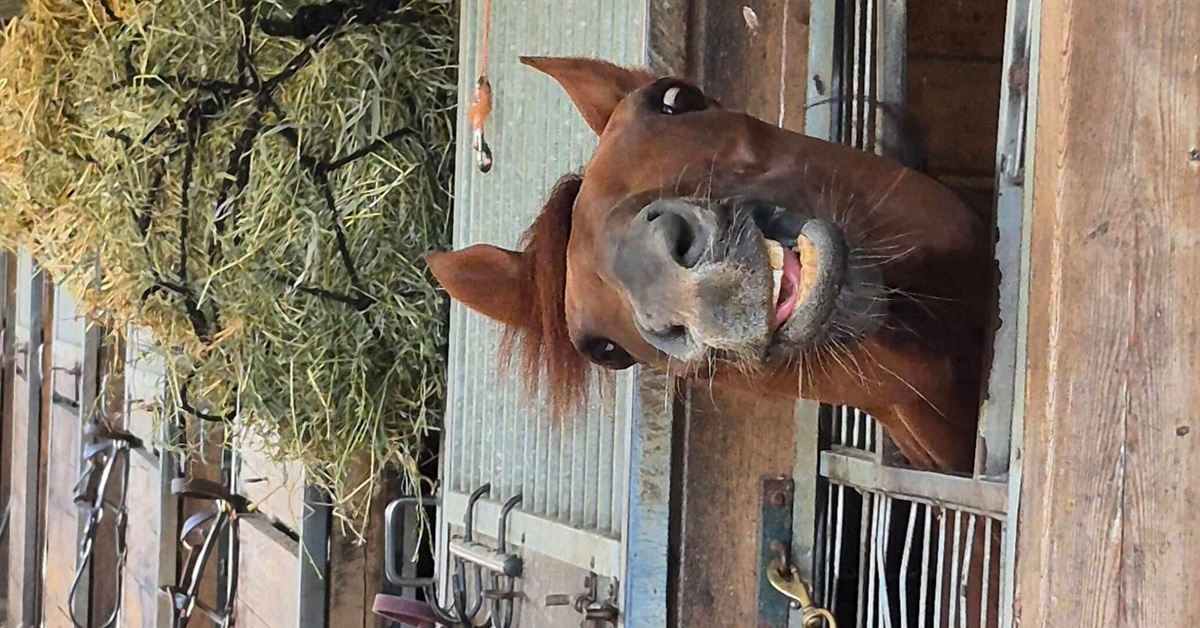The Ontario Ministry of Agriculture and Food has become aware of two cases of Potomac Horse Fever (PHF) in Ontario as of early August 2013. Samples collected from an anorexic and febrile horse in Essex County confirmed that the horse was suffering from PHF. The horse subsequently died. A horse in the Ottawa area also tested positive for PHF. It was exhibiting profuse watery diarrhea but is reported to be recovering.
PHF is reported every year in several regions of the United States and Canada, including southwestern and eastern Ontario. PHF cases occur in Ontario in the late summer.
A trematode, living in freshwater snails and aquatic insects such as caddis flies, mayflies, damselflies, dragonflies and stoneflies, is the reservoir for Neorickettsia risticii, the bacterium responsible for PHF. Horses contract the disease by ingesting the snails or insects in hay, grain, pasture or water. The incubation period is 10-18 days.
Initial clinical signs include anorexia, lethargy and fever, followed by enterocolitis, dehydration and diarrhea. This may progress to toxic shock, laminitis or death (30% mortality rate). Endotoxemia is characterized by a bright red/purple line (“toxic line”) on the gums. The Essex County horse had a toxic line. The disease may also cause abortion in pregnant mares.
Other diseases such as salmonellosis, clostridial infection, NSAID toxicity, antimicrobial-associated enteritis, fungal colitis and toxic enteritis have similar signs to PHF. Treatment includes intravenous oxytetracycline and, in horses with signs of enterocolitis, intravenous fluids and anti-inflammatory agents. Early treatment increases the likelihood of survival and veterinarians in endemic areas often initiate antibiotic treatment prior to diagnosis if a horse is showing signs consistent with the disease in late summer or fall.
PHF is not contagious and does not cause disease in humans. Sporadic disease caused by N. risticii has been reported in dogs and cats.
The following disease control steps can be taken:
Vaccination may decrease clinical signs but it will not prevent infection and illness. It protects against only one strain of the more than 14 identified strains of N. risticii. Neither horse mentioned above had been vaccinated against PHF.
Cover feed supplies and check water buckets and troughs for dead insects.
In endemic areas, turn off outside lights near stables and pastures during summer months to prevent attracting insects.
Veterinarians in Ontario should included PHF in their list of rule-outs when examining horses during the summer and fall that are anorexic and febrile. Laboratory samples should include EDTA blood from live animals, or lung, liver and spleen from necropsy. Serology is of limited value because of the high prevalence of false-positive titres.
The resources listed below contain more information on the disease and infection control.
RESOURCES
American Association of Equine Veterinarians
Agricultural Information Contact Centre:
1-877-424-1300
E-mail: ag.info.omafra@ontario.ca
www.ontario.ca/omaf
More News









